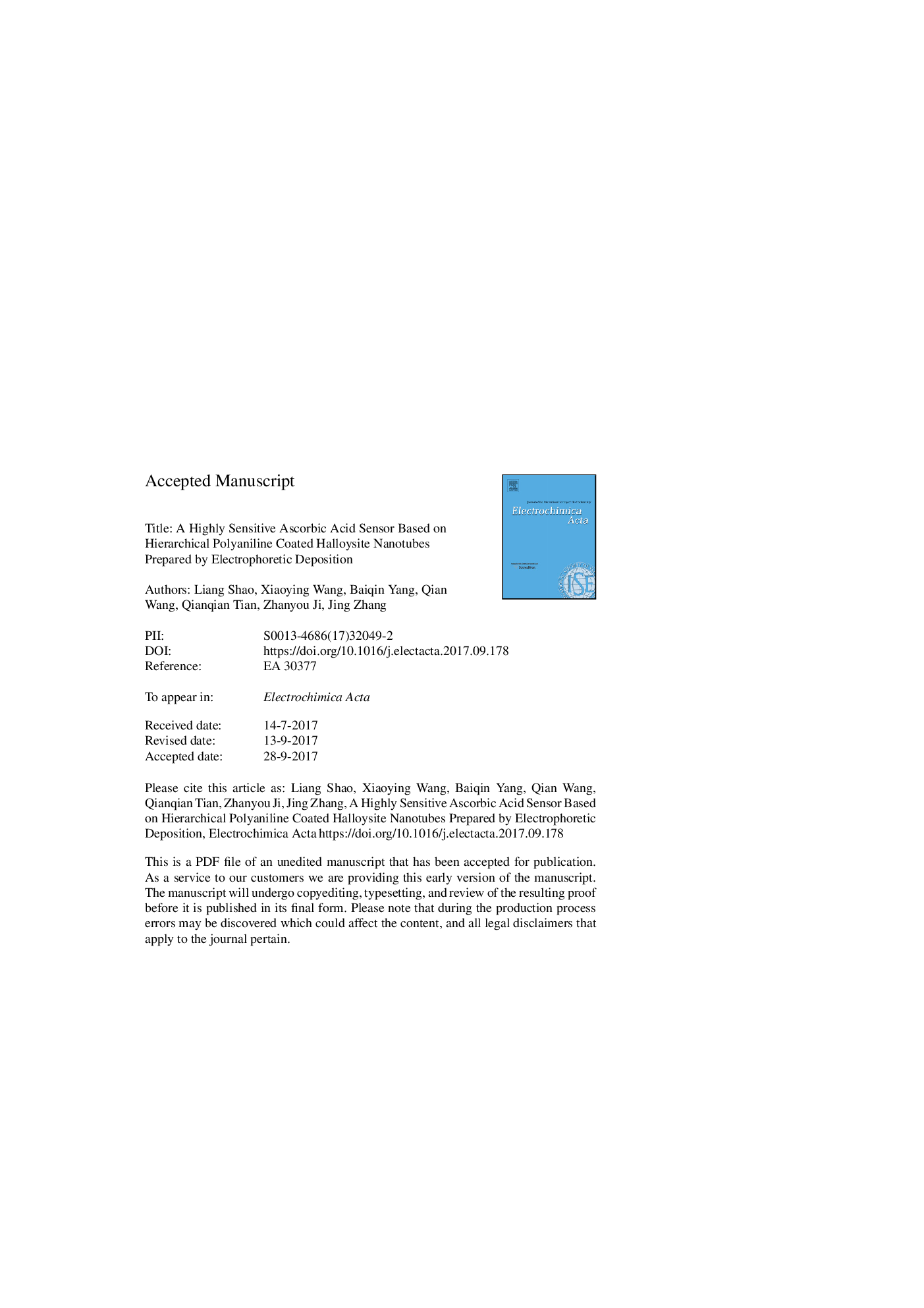| Article ID | Journal | Published Year | Pages | File Type |
|---|---|---|---|---|
| 4766683 | Electrochimica Acta | 2017 | 41 Pages |
Abstract
A highly sensitive ascorbic acid (AA) sensor based on hierarchical nanotube structured polyaniline (PANI)-halloysite nanotubes (HNTs) composites is reported. The PANI/HNTs electrode is electrophoretically deposited from the colloidal suspension of PANI/HNTs nanotubes which are obtained via chemical oxidative polymerization of aniline on HNTs. The electrode is a uniform and compact film with a porous structure, which is created with the 3-dimensional network-like coaxial nanotubes. It is the first report of such structure to the best of our knowledge. This PANI/HNTs sensor exhibits unprecedented sensitivity towards AA as high as 826.53 μA mMâ1 cmâ2 within a linear range of 0.005 to 5.5 mM, and a low detection limit of 0.21 μM. This ideal sensing performance could be ascribed to the porous structure affording efficient sensing channels for improving electron transport and interactions between the PANI and AA. These results demonstrate that PANI/HNTs hierarchical nanotubes are promising materials for electrochemical sensor applications.
Related Topics
Physical Sciences and Engineering
Chemical Engineering
Chemical Engineering (General)
Authors
Liang Shao, Xiaoying Wang, Baiqin Yang, Qian Wang, Qianqian Tian, Zhanyou Ji, Jing Zhang,
